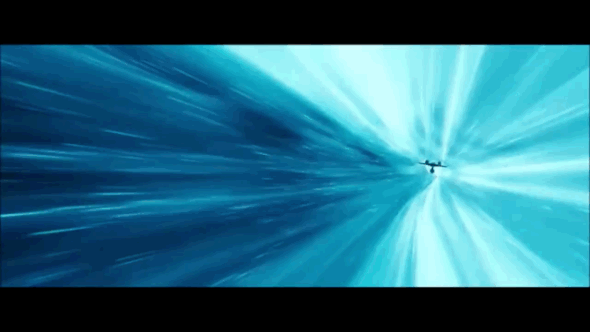Hi Guys and girls, Would like to talk today on the topic of the Warp Speed effect. I bring this up because after watching STD's Season 2 trailer, the Discovery has changed its warp effect to the "Kelvin" version of a tunnel. So wanted to spend some time on talking about the evolution of the effect over the years, and a bit of Science! in what warp actually is. ( I did look at old threads and didn't find anything recent, so I apologize if i'm retreading a topic) So, without further ado!
In TOS, we had just the stars moving, and thats about it. Impulse was slightly slower stars. Battles occurred at warp speeds.
In the movies, we still had just the moving stars, but the warp entry became more grandiouse. and in ST2 we got the "warp streaks" on the ships. The ship streak was combined with the star streaks in latter movies.
Enter Tng, first season was similar to tos, but with S2 we got the new "standard" of the Star Warp streaks and the entry Pop which continued to nemesis and through out all the "berman era" tv shows. Battles occured at warp, but mainly at impulse.
Next the 2009 "Warp Tunnel" effect, with changes in Darkness with the "fairy dust trail" warp entry, and the "warp bubble" in beyond. and the tunnel effect changed in each movie. And with this entered the "Hyperspace Effect" in that its a tunnel, and that going to warp was an effective means of escapeing a battle, instead of the past of, even if you go to warp.. you better be faster than the other guy to escape.
STD also changed it to a "Psycadelic Tunnel in season 1, and it seems standard Kelvin warp tunnel in S2.
"To be continued"
In TOS, we had just the stars moving, and thats about it. Impulse was slightly slower stars. Battles occurred at warp speeds.
In the movies, we still had just the moving stars, but the warp entry became more grandiouse. and in ST2 we got the "warp streaks" on the ships. The ship streak was combined with the star streaks in latter movies.
Enter Tng, first season was similar to tos, but with S2 we got the new "standard" of the Star Warp streaks and the entry Pop which continued to nemesis and through out all the "berman era" tv shows. Battles occured at warp, but mainly at impulse.
Next the 2009 "Warp Tunnel" effect, with changes in Darkness with the "fairy dust trail" warp entry, and the "warp bubble" in beyond. and the tunnel effect changed in each movie. And with this entered the "Hyperspace Effect" in that its a tunnel, and that going to warp was an effective means of escapeing a battle, instead of the past of, even if you go to warp.. you better be faster than the other guy to escape.
STD also changed it to a "Psycadelic Tunnel in season 1, and it seems standard Kelvin warp tunnel in S2.
"To be continued"



